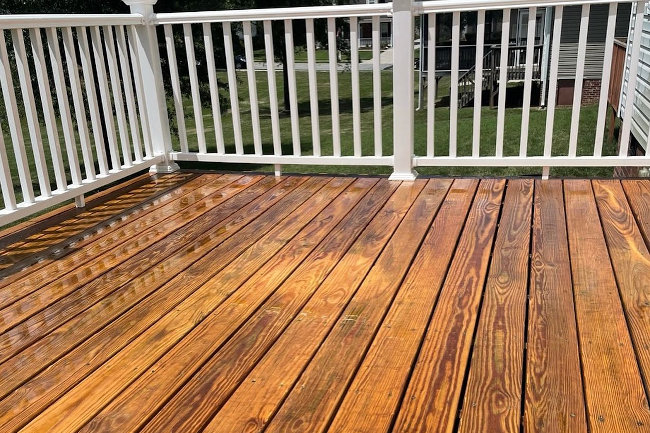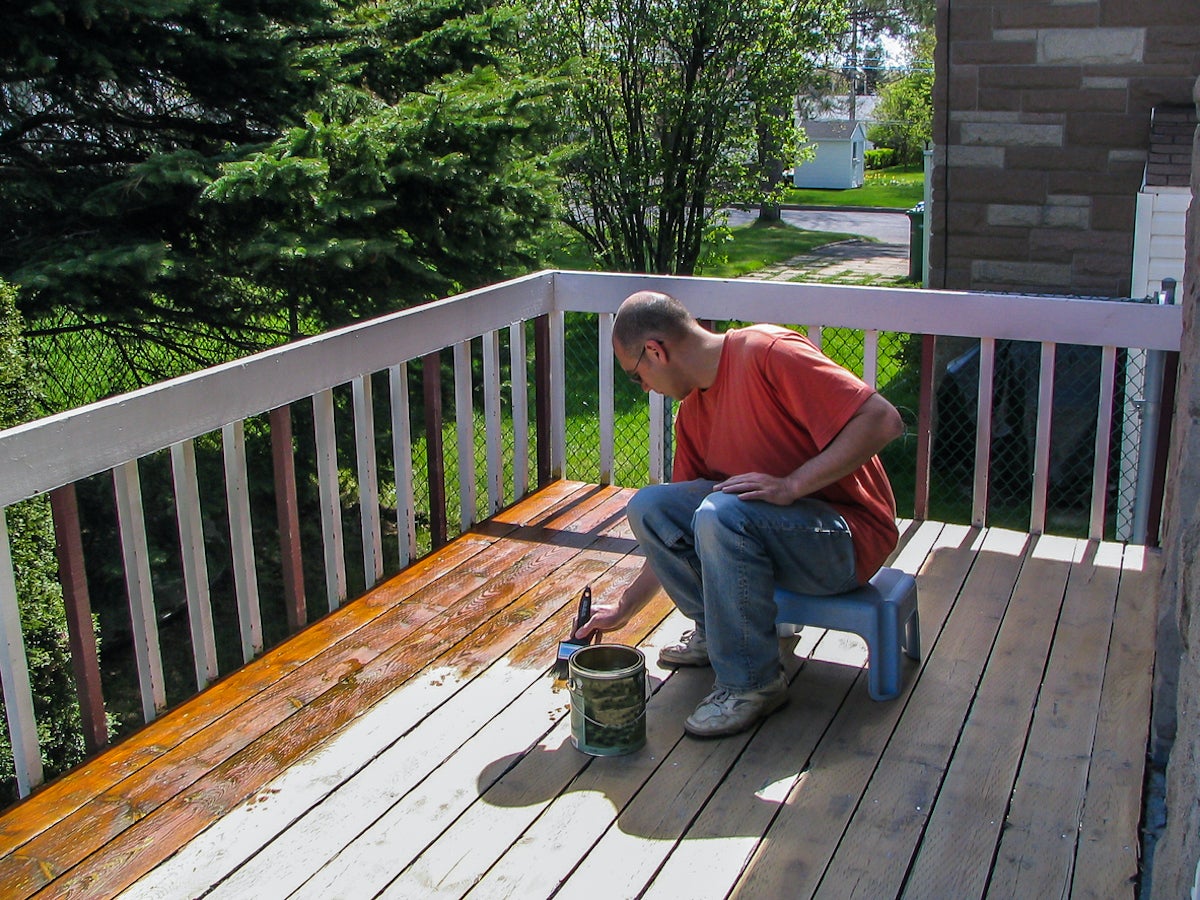Beautiful Deck Layouts: The Effect of the Right Stain Selection
Beautiful Deck Layouts: The Effect of the Right Stain Selection
Blog Article
A Comprehensive Overview to Various Kinds of Deck Discoloration Techniques for Ultimate Defense and Aesthetics
In the world of deck maintenance, the art of tarnishing stands as a pivotal action towards both preserving the integrity of your outdoor room and boosting its aesthetic charm. As we navigate with the elaborate globe of deck discoloration strategies, one begins to appreciate the nuanced approaches that can make all the distinction between an average finish and a flawless one. From the option of the ideal discolor type to the careful application methods, each aspect plays a critical role in accomplishing that perfect balance in between protection and aesthetic appeals. Join us as we uncover the keys behind accomplishing the supreme deck discoloration results-- a journey where every brushstroke forms not just the surface area, but the really significance of your outside refuge.
Understanding Different Kinds Of Discolorations
Numerous sorts of spots are commonly utilized in the process of deck staining to accomplish various aesthetic and protective results. Transparent spots are excellent for showcasing the all-natural grain of the wood while supplying minimal defense versus UV rays and dampness. On the other hand, semi-transparent discolorations provide an equilibrium between color enhancement and security, permitting some wood grain to show with. For a much more nontransparent finish that provides optimum security against the components, strong spots are the favored option. These spots come in a variety of shades and successfully conceal the timber grain.
Toners add a hint of color to the wood while giving very little security, making them appropriate for newer decks with less wear. Understanding the characteristics and advantages of each type of stain is important for achieving the desired look and sturdiness for your deck.
Choosing the Right Stain Color
When thinking about the looks of your deck staining task, the option of tarnish color plays an essential function in enhancing the protective high qualities of the selected discolor type (Beautiful Deck). The shade you choose can considerably influence the general appearance of your deck, as well as its ability to withstand the components over time
When picking a discolor color, it's vital to take into consideration the existing color scheme of your home's outside. Integrating the deck tarnish with the total visual of your property can develop a cohesive and aesthetically appealing outside space. Furthermore, the color of your deck stain can influence the temperature level of the deck surface; darker colors have a tendency to take in more warmth, while lighter shades reflect sunlight and stay cooler.
Furthermore, the sort of timber you are staining will certainly also affect exactly how the tarnish color appears. Various timber species can connect with the stain in different methods, potentially altering the final shade. It's a good idea to evaluate the discolor on a small, unnoticeable area of the deck to guarantee the color ends up as wanted prior to waging the whole job.
Preparing Your Deck for Discoloration
To guarantee a successful and long-lasting deck staining project, detailed prep work of the deck surface area is essential. Begin by cleaning up the deck thoroughly to get rid of dust, grime, mildew, and any old discolor or end up. Make use of a deck cleaner or a mix of water and cleaning agent along with a tight brush or stress washer to scrub the surface area tidy. After cleaning, enable the deck to dry totally prior to carrying on to the following step.
Examine the deck for any harmed or rotten boards that require to be changed. Hammer down any kind of protruding nails and sand any type of harsh locations to make sure a smooth surface area for discoloration. Check for any loosened barriers or actions that may require tightening up or repair.
When the deck is clean, dry, and in excellent repair service, consider using a timber brightener to recover the deck's natural shade and open up the timber pores for far better stain penetration. Secure any type of close-by plants, furnishings, or surfaces with plastic sheet before proceeding with the staining process. Appropriate prep work is vital to achieving a professional-looking surface and making best use of the longevity of your deck discolor.
Using Spot With Various Strategies
For a perfect and specialist surface, the method of using tarnish plays an essential role in enhancing the appearance and sturdiness of your deck. There are a number of strategies you can use to make sure an effective application of stain.
Cleaning is a typical approach that allows for accuracy and control over the amount of discolor applied. It is perfect for complex areas i thought about this and getting to between deck boards (Chicago Deck Staining). Rolling is a quicker alternative, covering bigger area successfully. Back-brushing after rolling is recommended to also out the stain and function it right into the timber for much better penetration.
Spraying is another popular strategy, using speed and convenience of application, particularly for huge deck locations. Whichever method you pick, guaranteeing appropriate prep work and complying with producer guidelines will certainly aid accomplish a resilient and beautiful stain coating on your deck.

Keeping and Re-staining Your Deck
Appropriate upkeep and timely re-staining are crucial for maintaining the elegance and long life of your deck. Normal maintenance tasks include sweeping off debris, cleansing with a deck cleaner, and inspecting for any kind of indicators of wear or damages. Dealing with problems immediately can prevent extra considerable troubles in the future. When it concerns re-staining your deck, the frequency depends upon numerous variables such as the sort of tarnish made use of, the environment in your area, and how much deterioration your deck experiences. Typically, it is advised to re-stain your deck every 2-4 years to preserve its protection and aesthetic appeals.
Before re-staining, make sure the deck is clean, dry, and cost-free of any kind of previous discolor deposit. Pick a high-grade discolor that fits your deck's material and offers the desired level of security.
Verdict
To conclude, understanding the different sorts of deck spots, choosing the right shade, effectively preparing the deck, applying tarnish with different strategies, and preserving and re-staining the deck visit here are crucial actions for best protection and visual appeals. By adhering to these actions, you can ensure that your deck continues to be in leading problem for years to come.
Additionally, the shade of your deck stain can affect the temperature level of the deck surface area; darker colors have a tendency to absorb more warm, while lighter colors show sunlight and remain cooler.
It's advisable to evaluate the tarnish on a small, low-profile area of the deck to guarantee the shade turns out as Our site wanted prior to proceeding with the entire task.

Report this page